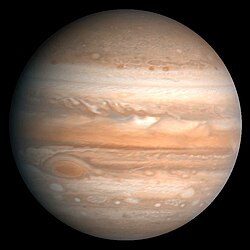Hi,
today I want to do a short rewrite of some posts from NASA page about things happening lately in space, simply to understand and remember them better, makes sense huh?
I have got three things, Van Allen Probes, OSIRIS-REx and Juno (I am saving that one as last since it is simply best).
Van Allen Probes are two satellites orbiting Earth in 9 hour intervals (2 000 miles per second). They celebrated their 5th year anniversary. Such a satellite must be hardened against radiation, otherwise the high energetic particles would destroy its electronics. Throughout its life, it discovered for example that there can be 3rd radiation belt around the Earth.
I already wrote about OSIRIS-Rex before. It is rare mission, first of its kind because it will optimally return samples of the asteroid Bennu back to Earth. On September 22nd, it will pass couple thousand kilometers above Earth that will speed it up so that it does not have to use so much fuel. They had to make sure that the spacecraft does not hit some other satellite that is in the Earth’s orbit, it would be quite sad if this couple hundred-million-dollar project failed even before the landing (I guess it must be in this magnitude).
If you read my blog you know about the spacecraft Juno and that it got close to Jupiter (and started the mission after the long flight). I guess I do not need to say anything when I share those (color enhanced) pictures from the eight-close approach.
Dragallur
Sources are just those three NASA pages.







 Zeus in Greece mythology.
Zeus in Greece mythology.